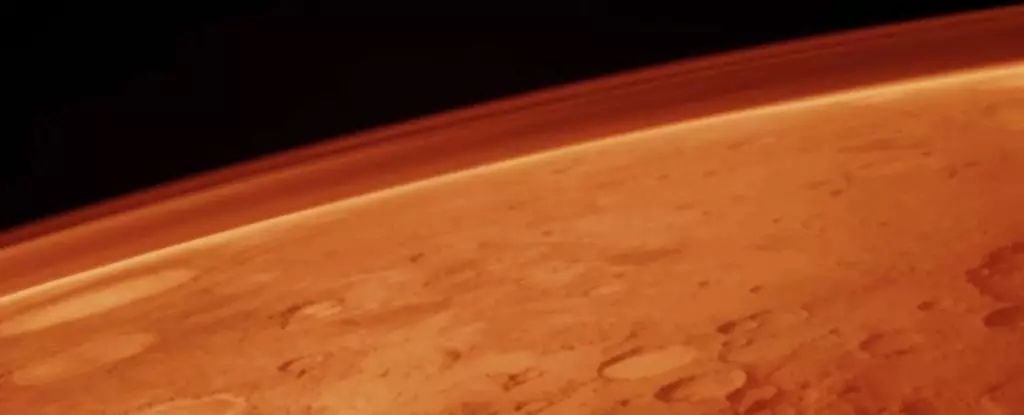For generations, the idea of terraforming Mars has captivated scientists and dreamers alike. The imagery of lush landscapes filled with rivers and oceans, bustling with human life and extraterrestrial flora, stretches the imagination beyond its current boundaries. This tantalizing dream, however, is far from being a tangible reality. As visionaries like Kim Stanley Robinson portrayed in his Martian saga, the actual science involved in transforming Mars into an Earth-like habitat is daunting. A recent study presented by Leszek Czechowski at the 56th Lunar and Planetary Science Conference reveals the immense challenges we face in this celestial quest. Instead of merely indulging in speculative fiction, the core of Czechowski’s research takes a grounding approach by exposing the herculean tasks ahead.
The Crucial Energy Dilemma
Czechowski’s paper, intriguingly entitled “Energy Problems of Terraforming Mars,” provides a stark analysis of the realities involved in increasing Mars’ atmospheric pressure. Current Martian conditions are so extreme that human beings would face imminent danger without protective gear. The pressure is currently so low that bodily fluids would start to boil instantaneously. While Czechowski identifies areas on the planet where conditions are somewhat better—most notably the Hellas Planitia, which presents a marginally more hospitable atmosphere—this is merely the starting point, not a solution in itself. A considerable increase in atmospheric pressure to reach even 10% that of Earth poses an obstacle that seems insurmountable.
Transporting an Atmosphere: The Theoretical Journey
The crux of the problem lies not only in the sheer volume of atmospheric material needed but also in the energy required to transport it. The findings indicate that asteroids from the Kuiper Belt may hold the key, yet hazards abound in this approach. The cruel irony is that while the Kuiper Belt is home to plenty of water and nitrogen—essential components for breathable air—it remains billions of miles from Mars, presenting a logistical nightmare akin to reaching the ends of the Earth. Moreover, Czechowski highlights the Oort Cloud, a theorized shell surrounding the Solar System that holds ample icy bodies. However, despite their plentiful supply, it would take over 15,000 years to transport even a fraction of this material to Mars in a manner that would contribute meaningfully to terraforming efforts.
Engineering Challenges: The Science of Delivering Atmosphere
Czechowski suggests that crashing substantial icy bodies into Mars may yield the necessary atmospheric constituents while simultaneously releasing energy to warm the planet. While this strategy seems promising theoretically, the detailed engineering challenges involved are profound. The potential for catastrophic failure looms, as these icy celestial bodies are known for their unstable structures, making them prone to disintegration when navigating the inner Solar System. Even the method of trajectory alteration needed to direct them toward Mars introduces significant risks. The idea of relying on gravity assists during travel could lead to unintended fragmentation of the ice and rock masses, wasting precious resources.
Potential Solutions and Unexplored Alternatives
To tackle these obstacles, Czechowski suggests utilizing advanced propulsion technologies, such as fusion-powered ion engines. The concept is as exciting as it is elusive. While fusion technology holds promise, the practical applications remain largely theoretical, and the specifics of designing such a propulsion system are still a subject for future research. When juxtaposed with bioengineering solutions, which also require extensive energy and resources, the limitations of existing technologies further highlight the daunting road ahead for terraforming efforts.
Hope Against All Odds
Despite the grim realities painted by Dr. Czechowski, the human spirit remains undeterred. Mars enthusiasts and futurists continue to conceptualize a time when terraforming could shift from sci-fi fantasy into an achievable milestone. Though the current technological landscape seems far from making this a reality, the mere ability to envision such a future is essential for sparking innovation and discovery. As we push the boundaries of our understanding, the quest for terraforming Mars becomes not just an exploration of the Red Planet, but also a testament to the indomitable nature of human ambition. While crashing icy bodies into Mars may seem like an improbable hope today, each small step we take in scientific advancement brings us closer to realizing the extraordinary potential that lies in the cosmos.

